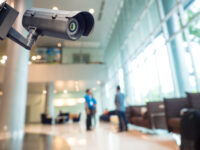Although Santa is busy double-checking his Naughty or Nice List, he recently gifted Facilities Management Advisor an exclusive, behind-the-scenes look at major upgrades planned for the North Pole! Learn more in this special holiday edition of our “Under Construction” series. Totaling 333 million Reindeer Bucks (nearly 1 billion U.S. dollars), the project aims to ensure […]
The pandemic may be behind us, but the world is forever changed in how it views the definition of clean. Cleanliness is only the first step in ensuring that surfaces are sanitary, particularly when it comes to commercial cleaning. The post-pandemic normal has created an imperative for facilities to maintain hygienic environments for clients, customers, […]
Back to Basics is an article series that highlights important, but possibly overlooked, information facilities management professionals should know. For commercial facilities, effective fire detection guidelines are not just a safety measure—they are a necessity. The U.S. Fire Administration 2023 Fire Estimate reported that over a 10-year span in nonresidential buildings, there were 110,000 fires, 130 […]
The holiday season is now fully underway, bringing with it a wave of corporate parties, cocktail hours, and family events. These celebrations are intended to offer a well-deserved break and revitalize hard-working employees. However, poor planning or inadequate preparation by cleaning teams can lead to unforeseen issues that quickly dampen the festive spirit. Cleaning personnel […]
Rising workplace violence, especially in healthcare and other client-facing sectors, points to a growing security challenge that demands facility managers’ attention. According to recent research from Verkada and The Harris Poll, 82% of healthcare workers want their employers to increase security measures, with 77% reporting no improvements in the past year. While strong security has […]
On Oct. 19, robbers pulled off a daring, midday heist at the storied Louvre in Paris, France. They made off with $102 million worth of crown jewels in a move reminiscent of a Hollywood blockbuster. What many didn’t know at the time was that France’s court of auditors had urged the world-famous museum to hasten […]
Editor’s note: FM Perspectives are industry op-eds. The views expressed are the authors’ and do not necessarily reflect those of Facilities Management Advisor. Facilities managers are sitting on an untapped treasure trove: cleaning. By rethinking their cleaning practices, they could access higher returns on multiple fronts. Out of sight shouldn’t mean out of mind, and the microscopic […]
The Occupational Safety and Health Administration (OSHA) has cited a fresh-cut vegetable processing company for willfully and repeatedly violating safety requirements after a worker was fatally injured while cleaning and sanitizing a machine, the agency announced Nov. 24. The agency initiated an inspection into Taylor Farms New Jersey Inc. after being notified of a fatality […]
With the rise of smart buildings, cybersecurity is becoming an essential concern for facilities managers, but physical security remains a top priority. That said, what might be ahead for the physical security industry in 2026? Genetec, a provider of enterprise physical security software, offered the following predictions: 1. Choice and Flexibility Will Define the Next […]
This Thanksgiving, let’s take a moment to appreciate facilities managers! Here are five reasons to be grateful for the unsung heroes.










